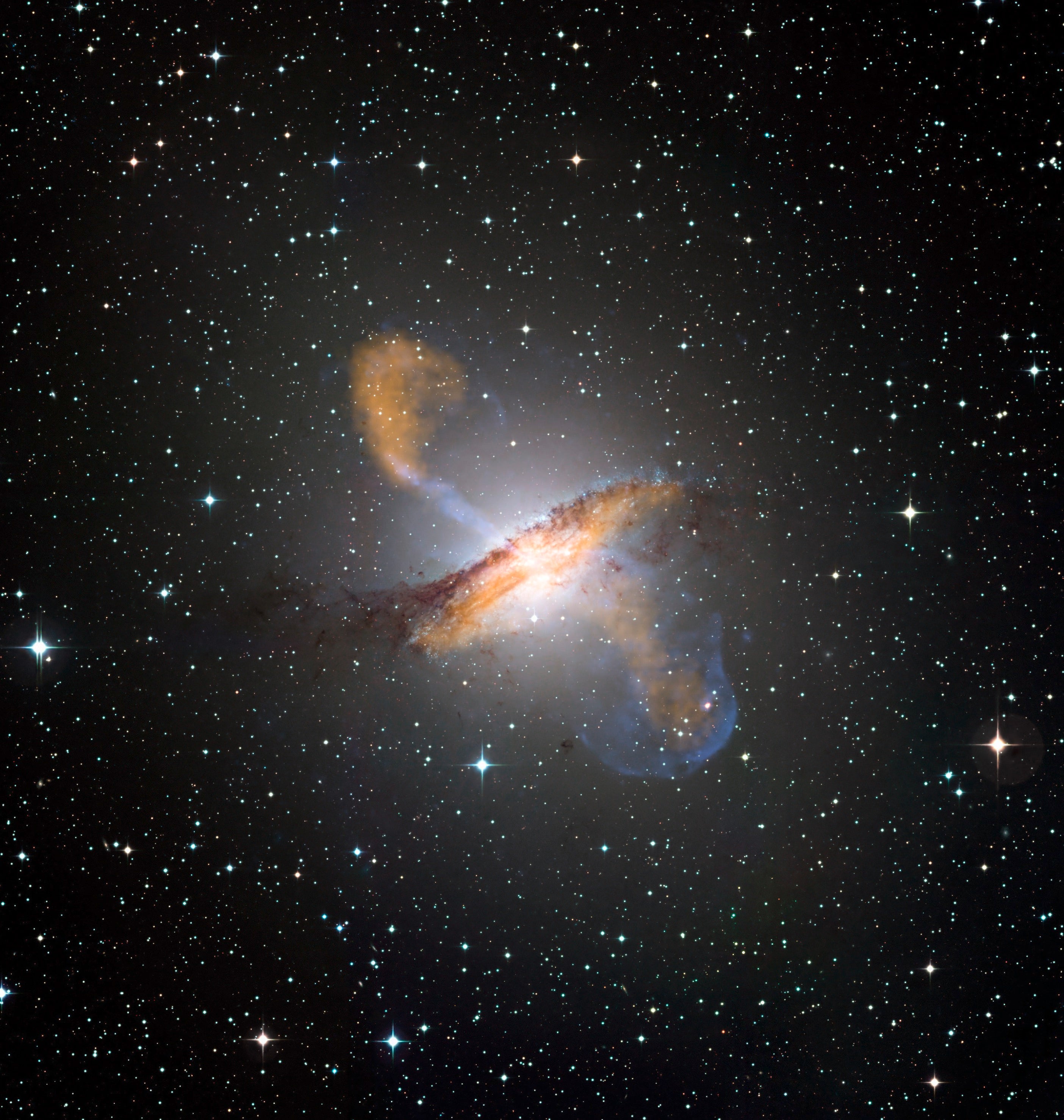Quasars were the first known member of the menagerie of active galaxies. But they all have one thing in common: a voracious appetite.

Centaurus A is an active galaxy, with jets and radio lobes and jets sprouting from its central back hole. Credit: ESO/WFI (Optical); MPIfR/ESO/APEX/A.Weiss et al. (Submillimetre); NASA/CXC/CfA/R.Kraft et al. (X-ray)
In 1963, Caltech researcher Maarten Schmidt had a eureka moment. He was looking at the spectrum of a mysterious object named 3C 273, a source that had been found and cataloged with then-novel radio telescopes. It appeared to be a star emitting extremely high amounts of energy. But bizarrely, its spectrum matched no known elements — the emission lines were in all the wrong places, at all the wrong wavelengths.
Schmidt’s eureka moment came when he realized that the element he was trying to identify was the simplest of all. The emission lines were from hydrogen, but they had been shifted to the red end of the spectrum — meaning this object was not a star, but in fact something much more massive, 2 billion light-years away.
This so-called quasi-stellar object (or quasar) was just the first type to be found of what are now called active galaxies — galaxies with high-energy physics occurring at their cores. Alongside quasars in the menagerie of active galaxies BL Lacertae objects, Seyfert galaxies, and radio galaxies.
It took astronomers years to understand what they were seeing, but eventually they came to understand that all of these various types of galaxies were essentially one type of object — a galaxy with an actively feeding supermassive black hole — but with varying levels of appetite and viewed from different angles. Today, this understanding is known as the unified model of active galactic nuclei (AGN).
Follow Astronomy magazine, the world’s best-selling astronomy magazine:
🌎 Website: https://astronomy.com
📖 Subscribe: http://subscribe.astronomy.com
📘 Facebook: https://www.facebook.com/AstronomyMagazine
📸 Instagram: https://instagram.com/astronomy.magazine
🐦 X/Twitter: https://twitter.com/AstronomyMag
Shop Celestron telescopes:
🔭 Website: https://celestron.com
Follow Dave Eicher:
📘 Facebook: https://www.facebook.com/davidjohneicher
📸 Instagram: https://instagram.com/eicher.david
🐦 X/Twitter: https://twitter.com/deicherstar
